Almost everyone reading this should be old enough to remember that back in the 2010s, zombie-related media enjoyed a huge surge in popularity. Films, shows, video games, comic books, you name it – the public suddenly couldn't get enough of walking dead fantasies.
Let's face it, there's probably a good psychoanalytic reason for that. Modern American culture has, in the name of productivity, forced many of us to adopt lifestyles so regimented, so regulated, so mechanical, that many Americans probably feel like zombies themselves. Perhaps we're unconsciously drawn to zombie stories as a way of working out this inner conflict.
Well, now you have a way to fight back. That's because 'Merica Labz is dropping Z-Bomb, a pre-workout designed to get you in shape for a zombie apocalypse. With a truly heroic dose of caffeine, and the sizable amount of tyrosine, this formula can help you stay awake and focused during your midnight watch after sh*t hits the fan.
The 'Z' is for "Zombie"... or is it for Zynamite?!
Plus, 'Merica Labz provides a couple secret weapons for you to wield in your struggle to survive. We have two new and somewhat rare ingredients making an appearance together – Zynamite and PurpleForce.
Let's get into it, but first, check the PricePlow news and deals:
Merica Labz Z-Bomb – Deals and Price Drop Alerts
Get Price Alerts
No spam, no scams.
Disclosure: PricePlow relies on pricing from stores with which we have a business relationship. We work hard to keep pricing current, but you may find a better offer.
Posts are sponsored in part by the retailers and/or brands listed on this page.
This area is reserved for Team PricePlow's upcoming videos.
Subscribe to our channel and sign up for notifications so you catch it when it goes live!
'Merica Labz Z-Bomb Ingredients
In a single 1-scoop (19.1 gram) serving of Z-Bomb from 'Merica Labz, you get the following:
-
L-Citrulline Malate (2:1) – 8,000 mg
Citrulline is a popular pre-workout ingredient, thanks to its ability to increase the body's production of nitric oxide (NO).[1]
It's conditionally essential, meaning your body can produce some citrulline, but not necessarily enough to cover your metabolic requirements. If a stressful event increases your body's need for citrulline – illness, injury or intense training, for example – your body's endogenous production of citrulline probably won't be able to keep up. In these cases, supplementation may be required.
Here's how citrulline gets converted into NO:
Citrulline → Arginine → NO**
**So why not supplement with arginine? Because citrulline is much more bioavailable when taken orally.[2-4]
So, what's so great about NO? Basically, NO is what gives you the pump so many bodybuilders and weightlifters chase in the gym. NO triggers vasodilation, a mechanism that causes the diameter of your blood vessels to expand. Greater blood vessel diameter means decreased cardiovascular resistance, allowing your heart and arteries to move the same volume of blood with less effort. Naturally, this leads to a drop in both blood pressure and resting heart rate.[5-7]
Improved circulation can, in turn, enhance recovery and performance, as oxygen and nutrients are delivered to cells and metabolic wastes removed from cells, more efficiently.
What does all of this add up to? Citrulline research shows the following benefits:
- Increased power through improved oxygen uptake[8]
- Increased athletic endurance, by as much as 50%[9]
- Decreased post-exercise muscle soreness[9]
- Upregulated growth hormone (GH) after exercise[10]
- Reduced protein catabolism[11]
- Greater muscle growth following exercise[12,13]
Need even more pumps? Well then you're crazy, but check out Merica Labz F'n Pump'd!
Citrulline has also been shown to increase the body's supply of ornithine,[14] an amino acid that helps detoxify ammonia.[15] Since ammonia is a toxic metabolic waste product that can cause both mental and physical fatigue as it accumulates, helping get rid of ornithine is one of the mechanisms by which citrulline increases endurance.
Ornithine can help you sleep better and feel less stress, thanks to the fact that it can decrease the body's ratio of cortisol to DHEA.[15]
How much citrulline is this?
The 2:1 ratio indicated on the label means there are 2 parts citrulline for every 1 part malate. That gives us about 5,300 milligrams of citrulline per serving, a number well above the 3,000 milligram dose that's most commonly used and studied.
What does malate do?
The malate or malic acid in this ingredient has some benefits in its own right. For example, malate can help facilitate the Krebs cycle, which is your cells' main energy production process.[16] One study found that citrulline malate can significantly improve cellular aerobic respiration.[17]
-
Beta-Alanine – 3,200 mg
Beta-alanine is an ergogenic aid that can help boost athletic performance by acting as a precursor to carnosine. Carnosine is a dipeptide molecule that can help remove lactic acid from muscles, which is very important since the accumulation of lactic acid can produce muscular fatigue.[18] Thus, eliminating lactic acid through increased carnosine production can delay the onset of muscular fatigue, thus increasing endurance.
We're interested in section (B) here, where beta alanine alone shows great results compared to placebo.[19]
We take beta-alanine instead of carnosine because the oral bioavailability of carnosine is not very good. Beta-alanine's bioavailability, on the other hand, is excellent, making supplementation a great strategy for increasing carnosine production.
The other prerequisite for carnosine, the amino acid L-histidine, is so abundant in commonly-eaten foods that your histidine intake is very unlikely to limit carnosine synthesis. That makes beta-alanine the limiting factor,[20,21] and a smart target for supplementation.
Two meta-analyses, looking at over 40 published studies, found that beta-alanine is best at increasing endurance during exercises between 30 seconds to 10 minutes in duration.[19,22]
Don't worry about the tingles
Many consumers have reported a tingling sensation in their face and/or upper body after taking beta-alanine. If this happens to you, fear not – a meta-analysis on beta-alanine safety found that the tingles are harmless.[23]
-
Betaine Anhydrous – 2,500 mg
Betaine, also known as trimethylglycine (TMG), is another ergogenic aid, although it acts by a different mechanism than beta-alanine.
Methyl donor
One big common denominator in ergogenic aids is their ability to increase adenosine triphosphate (ATP) production. ATP is the body's energy currency, the usable form of energy that cells actually burn while carrying out metabolic tasks. Unsurprisingly, increasing your cells' supply of ATP can often translate to improved cellular function and, thus, better athletic and cognitive performance.
This is one of betaine's most important mechanisms of action – it increases ATP production and improves mitochondrial respiration.[24]
The placebo effect started strong with this group. But... the real gains obliterated placebo in due time with betaine!
Betaine does this by acting as a methyl donor. That means it carries methyl groups (chemical formula, CH3) to locations in the body where they're needed to perform cellular-metabolic processes.[25] In fact, betaine is one of the most powerful methyl donors identified so far.[26]
An important role for methyl groups in the human body is regulation of homocysteine, an amino acid byproduct of methionine metabolism. When homocysteine levels gets too high, it can significantly increase your risk for cardiovascular disease (CVD).[27] Betaine supplementation has been shown to decrease homocysteine levels[28] through its methyl-donating effect. This makes betaine supplementation potentially a good investment in your long-term cardiovascular health and athletic performance.
Osmolyte
The other big ergogenic mechanism of action behind betaine lies in its properties as an osmolyte. This means that betaine can influence the behavior of biological fluids.
Specifically, betaine can, by manipulating the osmotic pressure around cells, push extra water into those cells. This state of cellular hyperhydration can improve performance by increasing cellular access to nutrients[29,30] and making your cells more resistant to heat stress.[31]
Effects of betaine supplementation
Research even shows that betaine can improve:
- Strength[32,33]
- Power[31-33]
- Body composition[34]
One especially striking study, published in 2013, found that participants who took 2,500 milligrams of betaine per day – the same dose used in Z-Bomb – led to more than 5 pounds of muscle gain and 6 pounds of fat loss over the course of six weeks. This translates to a 3% decrease in body fat.[30,35]
In a 2018 study, college women who supplemented with betaine as part of a resistance training program lost 4 pounds more body fat than the placebo group.[36]
-
L-Tyrosine – 1,500 mg
Being fit doesn't come without a cost. The twin pillars of fitness — diet and exercise — can hammer your hormones pretty hard if not managed properly. The thyroid is particularly vulnerable to this abuse. Fortunately, tyrosine can help.
Tyrosine is an amino acid that's a precursor to the thyroid hormones, triiodothyronine (T3) and thyroxine (T4).[37,38] This is helpful because intense exercise, especially when conducted routinely for long periods, can potentially downregulate thyroid hormones and tip your metabolism into a high-cortisol state.[39,40] Since it's catabolic, and antagonistic to the action of the thyroid, cortisol can interfere with gains in muscle mass and fitness.
Caloric restriction can also interfere with thyroid function.[41] Combining it with intense exercise can be particularly bad. And let's be honest, most gym goers at least periodically restrict calories.
Tyrosine can increase your body's production of catecholamine neurotransmitters like dopamine, adrenaline, and noradrenaline,[42-44] leading to improvements in focus and motivation. Adrenaline and noradrenaline can also suppress appetite, which is yet another way that tyrosine can potentially help dieters.[45]
Mitigates sleep deprivation
As we've all learned the hard way, sleep deprivation can have terrible effects on both mental and physical performance. It's here that tyrosine really shines. According to a study conducted by the U.S. military, tyrosine is actually better at promoting wakefulness and cognitive function during sleep deprivation compared to caffeine.[46,47]
-
Caffeine Anhydrous – 450 mg
Caffeine is a methylxanthine stimulant capable of crossing the blood-brain barrier. This gives the chemical a high degree of availability and activity in the central nervous system, where it helps improve mood, focus, energy, and athletic performance.[48,49] Anhydrous caffeine is a fast-acting form of caffeine, typically used in pre-workout formulas because of its rapid absorption and action.
Known since 1991, very high dose caffeine can seriously boost performance. As you can see, it's quite variable amongst users - future research would show that caffeine's effects depend on your genotype.
Caffeine helps fight fatigue and promote wakefulness by blocking neuronal receptors for adenosine, a nucleotide byproduct of ATP hydrolysis that builds up in the brain while you're awake. Under normal circumstances, the more adenosine accumulates, the more tired you feel.[48] Caffeine helps reverse this effect by preventing adenosine from acting on your brain.
Caffeine can also increase cellular metabolism by inhibiting phosphodiesterase, an enzyme that breaks down cyclic adenosine monophosphate (cAMP). This causes cAMP to rise, which is beneficial as cAMP tells your cells to burn calories for energy. More cAMP means a faster metabolism.[49-51]
Thanks to its upregulation of cAMP, caffeine can increase the rate at which your body burns fat, by as much as 50%.[52]
Because of its effects on cellular metabolism, caffeine can improve multiple aspects of athletic performance, including strength, speed, and endurance.[53] It can also improve attentiveness, alertness, reaction time, and working memory.[54,55]
Note that 450 milligrams is a big dose of caffeine! If you aren't sure whether this dose is right for you, consult your doctor before taking Z-Bomb.
-
Alpha-GPC 50% (L-alphaglycerylphosphorylcholine) – 300 mg
Alpha-Glycerylphosphorylcholine, which can thankfully be abbreviated as alpha-GPC, is a special form of the essential B vitamin choline.
Choline plays a crucial role in the maintenance of your cells' phospholipid bilayer membranes, which are essential for cellular health and function.[56]
Alpha GPC is also a precursor to acetylcholine, a neurotransmitter the industry refers to as the learning neurotransmitter, thanks to its central role in learning and memory consolidation.[57] Increasing choline levels enables the body to make more acetylcholine and can enhance cognitive performance. Memory, learning, attention, alertness, and even balance and coordination are all affected by acetylcholine signaling in the brain.[58,59]
Alpha GPC is one of the most preferred forms of choline with supplement formulators because it's highly bioavailable and can cross the blood-brain barrier,[60] giving it a high degree of activity in the central nervous system.
-
Zynamite [Mangifera indica Extract (≥60% mangiferin)(Leaves)] – 250 mg
Zynamite is an extract sourced from Mangifera indica, a type of mango tree.
Zynamite is incredibly versatile and can be included in several different supplements! Image courtesy of Nektium.
It contains bioactive constituents that can cross the blood-brain barrier and upregulate long-term potentiation,[61] thus helping your brain process and convert short-term memories into long-term memories.
Zynamite and caffeine may have synergistic effects on cognition.[61] In fact, Zynamite has been proposed as a replacement for caffeine's nootropic role,[61] which is impressive given caffeine's bona fides.
Some studies show that combining Zynamite with ingredients like luteolin and quercetin can significantly improve VO2 max, power output, and oxygen uptake.[62-64] One study found that Zynamite and quercetin, taken together, can attenuate muscle damage and accelerate recovery after exercise.[65]
Zynamite appears to be safe. Research indicates that doses of at least 2,000 milligrams per kilogram of bodyweight per day are needed for adverse effects to appear.[66,67]
-
Mucuna pruriens Extract (Seed)(50% L-Dopa) – 250 mg
Mucuna pruriens, known colloquially as velvet bean, is a dopamine booster that contains huge amounts of potent antioxidants.[68] Mucuna extracts are usually standardized for an amino acid called L-DOPA,[69] which is dopamine's direct precursor.[70]
L-DOPA first raises plasma L-DOPA levels... and then comes the dopamine burst! Amongst other things like feeling good, this helps fight prolactin (dopamine and prolactin have a competing pathway).
Since it's responsible for focus, motivation, and reward, upregulating dopamine is an obvious strategy for pre-workout formulas to take.
In addition, L-DOPA is great at reducing stress by decreasing cortisol production.[71-73] This makes it a good adjunct to ingredients like caffeine since it can help take the edge off your stimulant buzz.
Decreasing cortisol is generally good news for lifters since excess cortisol can decrease testosterone production[74,75] and interfere with muscle growth. In the modern world, high cortisol levels are a much more common problem than low cortisol levels.
Mucuna and L-DOPA both have the ability to increase the body's production of growth hormone (GH),[76-78] another anabolic hormone.
Finally, L-DOPA can decrease the hormone prolactin,[79] which is good since it tends to go up after exercise.[80]
-
Pine Bark Extract (Pinus pinaster)(95% Proanthocyanidins) – 250 mg
Pine bark extract is another great ingredient for increasing NO production.
It contains large amounts of antioxidant phenols[81,82] that can upregulate endothelial nitric oxide synthase (eNOS), the enzyme responsible for generating NO inside arteries.[81-83]
For thousands of years, pine bark extracts have been used all over the world to treat cardiovascular dysfunction. In traditional Chinese medicine (TCM), this condition is known as blood stasis.[81,82] As usual, modern scientific research has vindicated ancient wisdom and shows that pine bark has impressive cardioprotective effects.[81,82]
Pine bark is so anti-inflammatory that it may even decrease a person's chance of developing neurological disease.[82]
-
Theobromine HCl – 100 mg
Taken from a patent application, this is actually about its antitussive effect, but shows that theobromine certainly lasts a while.
Theobromine is a methylxanthine alkaloid and close cousin to caffeine. It has stimulant, vasodilatory, and bronchodilatory effects.[84]
Its mechanisms of action is similar to caffeine. Theobromine also inhibits phosphodiesterase, thus increasing cAMP[85] and increasing your metabolic rate.[86,87]
While caffeine has some vasodilatory effects, comparatively theobromine is much better at vasodilation.[88] In fact, even though it's technically a stimulant, it can actually reduce blood pressure and heart rate ![89] Sometimes theobromine is paired with caffeine because it can actually cancel out caffeine's hypertensive effect.[89] This gives you the ergogenic upside of caffeine with a lot less cardiovascular downside.
Theobromine does this by upregulating NO.[90] And because it has a longer half-life than caffeine, it can help mitigate the withdrawal effects of caffeine as its effects wear off.[91]
-
PurpleForce (Kenyan Purple Tea Extract) – 100 mg
PurpleForce purple tea is a strain of Camellia sinensis that's cross-bred to select for high concentrations of anthocyanins, which are pigment phenols with potent antioxidant and anti-inflammatory effects. Anthocyanins are blue, red, or purple in color and occur naturally in berries and beets.
Endurance boosting effects
It's been documented that ordinary green and black tea (varieties of Camellia sinensis) have the ability to upregulate nitric oxide (NO) synthesis by increasing the activity of endothelial antioxidant compounds.[92] Since higher levels of NO are associated with better athletic performance, we should expect to see the same effect from purple tea. After all, purple tea is basically ordinary tea plus anthocyanins. However, Purple Force is pretty new, which is why there isn't a lot of existing research yet. Still, early studies seem to suggest that our hypothesis is correct.
PurpleForce's GHG can reduce muscle damage and inflammation, getting you back into the gym faster
According to one randomized, double-blind, placebo-controlled study, subjects who were supplemented with Purple Force showed lower levels of lactate dehydrogenase following exercise. Since lactate dehydrogenase is the enzyme responsible for breaking down lactic acid, this implies the subjects also had lower levels of lactic acid itself.[93]
The reason this matters is, again, lactic acid produces muscular fatigue as it accumulates in muscle tissue. If the goal is to maximize athletic endurance, we should try to minimize lactic acid production.That's exactly what the study showed – subjects who took Purple Force and had lower levels of lactate dehydrogenase also had greater athletic endurance than the placebo group.[93] Interestingly, they also showed greater willingness to exercise,[93] which is of great potential importance in adhering to an exercise program.
GHG and its effects on fat metabolism
Another difference between purple tea and more common varieties of Camellia sinensis is that purple tea contains 1,2-di-Galloyl-4,6-Hexahydroxydipheno yl–D-Glucose, or GHG for short.[94]
PurpleForce has many constituents similar to other tea leaves, but it's the GHG content we're after.
GHG has documented anti-obesity and anti-aging effects.[94] For example, GHG seems to inhibit dietary fat absorption, as shown in a 2015 study where subjects received 100 milligrams of purple tea extract daily for 1 month. When the study concluded, the subjects taking purple tea had significantly less subcutaneous fat in their abdomens and upper arms.[95] At the same time, their lean body mass increased.[95]
In another study where men simply drank purple tea while researchers tracked their health, reductions in the following were observed:[96,97]
- BMI[96]
- Body weight[96]
- Body fat percentage[96]
- Abdominal fat[96]
- Waist and hip circumference[96]
Again, research is pretty limited thus far, but the preliminary results are promising.
According to MAYPRO, the distributor of Purple Force, this ingredient can also increase your body's expression of AMPK.[97] AMPK is basically an energy on demand enzyme,[98] responsible for burning calories by cranking up cellular metabolism.
You can learn more in our specific article, "PurpleForce: AMPK-Boosting Purple Tea Extract with Patented GHG".
-
Huperzia serrata Extract (Leaf and Stem) (1% Huperzine A) – 10 mg
Huperzia serrata extracts are standardized for huperzine A, a bioactive constituent that inhibits the enzyme acetylcholinesterase. Since acetylcholinesterase breaks down the neurotransmitter acetylcholine, inhibiting this enzyme can boost the level of acetylcholine in your brain.[99,100] As we mentioned earlier, acetylcholine is crucial for learning and overall cognitive performance, and plays a particularly important role in long-term potentiation.
In addition to its acetylcholine-boosting properties, huperzine A can also help protect the mitochondria in your brain from oxidative stress[101] and promote hippocampal neurogenesis.[102]
-
Niacin (as Nicotinic Acid) – 30 mg (187% DV)
Highlighted in the larger box, the pathway from nicotinamide riboside (NR) to NAD+... which goes through NMN.[103] Which begs the question... why not just supplement NMN directly?!
Niacin is an important precursor to nicotinamide adenine dinucleotide (NAD+).[103-105] This is good because NAD+ is required for a huge number of crucial metabolic processes, including liver detoxification, DNA repair, and cellular respiration.[106-109]
Niacin also upregulates adiponectin,[110] a hormone that affects insulin sensitivity throughout your body. Research shows that adiponectin is usually low in overweight and obese people,[111] meaning it's probably implicated in the insulin resistance associated with metabolic syndrome.
More adiponectin means a faster metabolism and more calories burned thanks to its impact on AMP-activated protein kinase (AMPK),[112] one of your body's metabolic master switches. Because of this, AMPK is a common target for fat loss ingredients.
Niacin has also been shown to dampen inflammation in adipose tissue,[110] which is hugely beneficial since this specific kind of inflammation is closely linked to metabolic dysfunction.[113]
Z-Bomb Flavors
Other Merica Labz Pre-Workouts
If it's anything like their original Red, White, & BOOM Pre-Workout, the ultra-intense F-BOMB, Red, White, & Boom Napalm (thermogenic pre-workout), or CASTLE BRAVO (thermonuclear detonation pre-workout), it's going to be delicious.
Conclusion: The Z is for Zynamite... or Zombie?!
Z-Bomb's ingredients are mostly standard, battle-tested and battle-proven pre-workout ingredients, with two key exceptions: Zynamite and Purple Force. In our opinion, these two ingredients are also awesome, but they are lesser-known and serve to positively distinguish Z-Bomb from the typical pre-workout fare.
The 'Merica Labz team always brings packed products into the market and Z-Bomb is another welcome addition. The nootropic stack in this pre-workout is awesome – between the massive dose of caffeine, alpha-GPC, Zynamite, L-DOPA, and huperzine-A, you'll really feel a nice buzz, focus, and drive when taking this.
Merica Labz Z-Bomb – Deals and Price Drop Alerts
Get Price Alerts
No spam, no scams.
Disclosure: PricePlow relies on pricing from stores with which we have a business relationship. We work hard to keep pricing current, but you may find a better offer.
Posts are sponsored in part by the retailers and/or brands listed on this page.
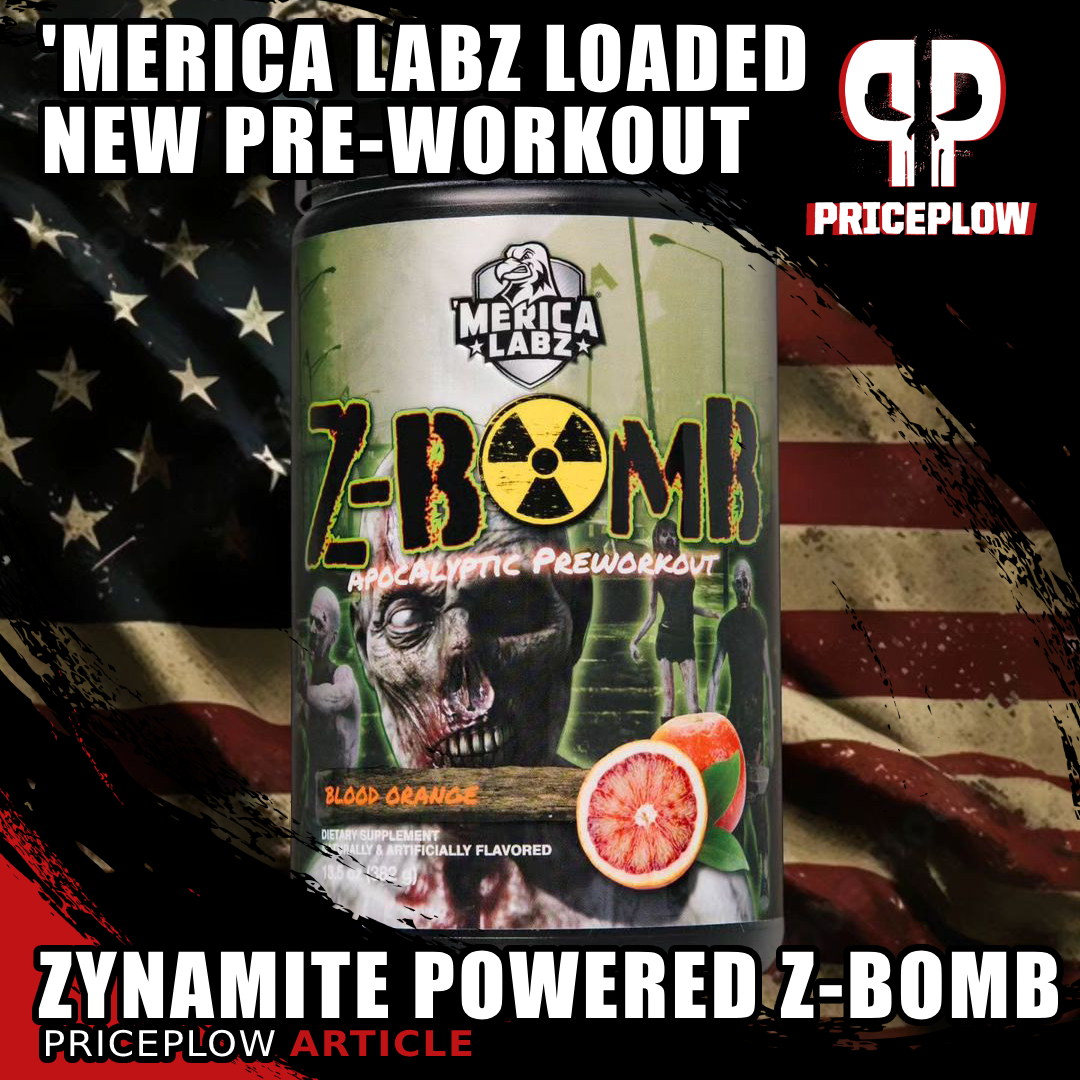


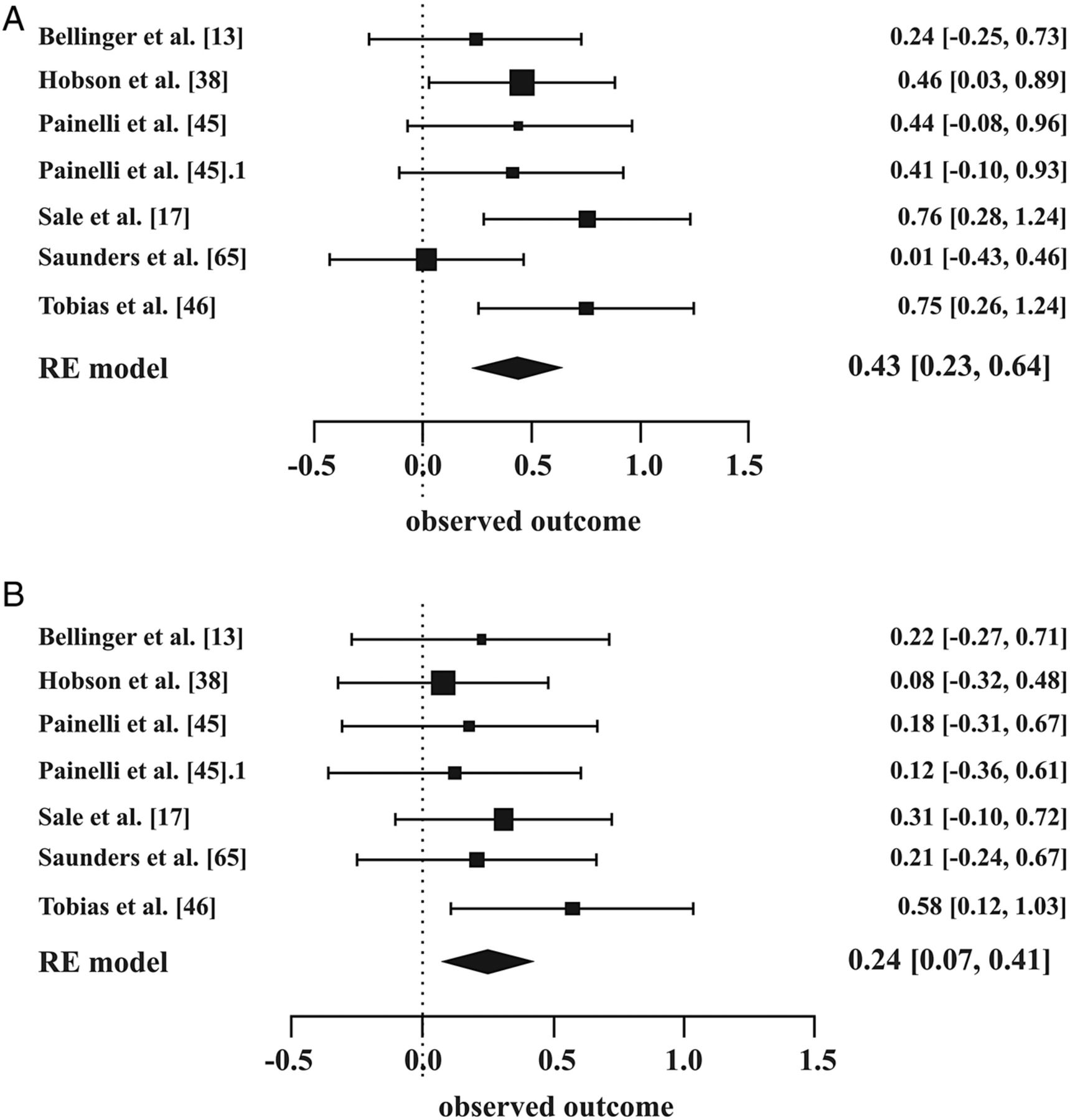
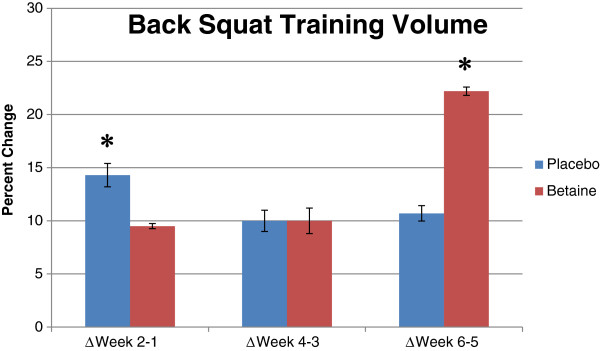

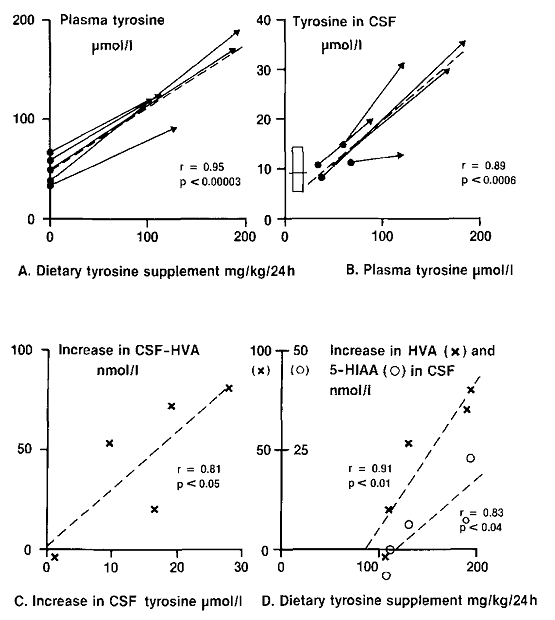
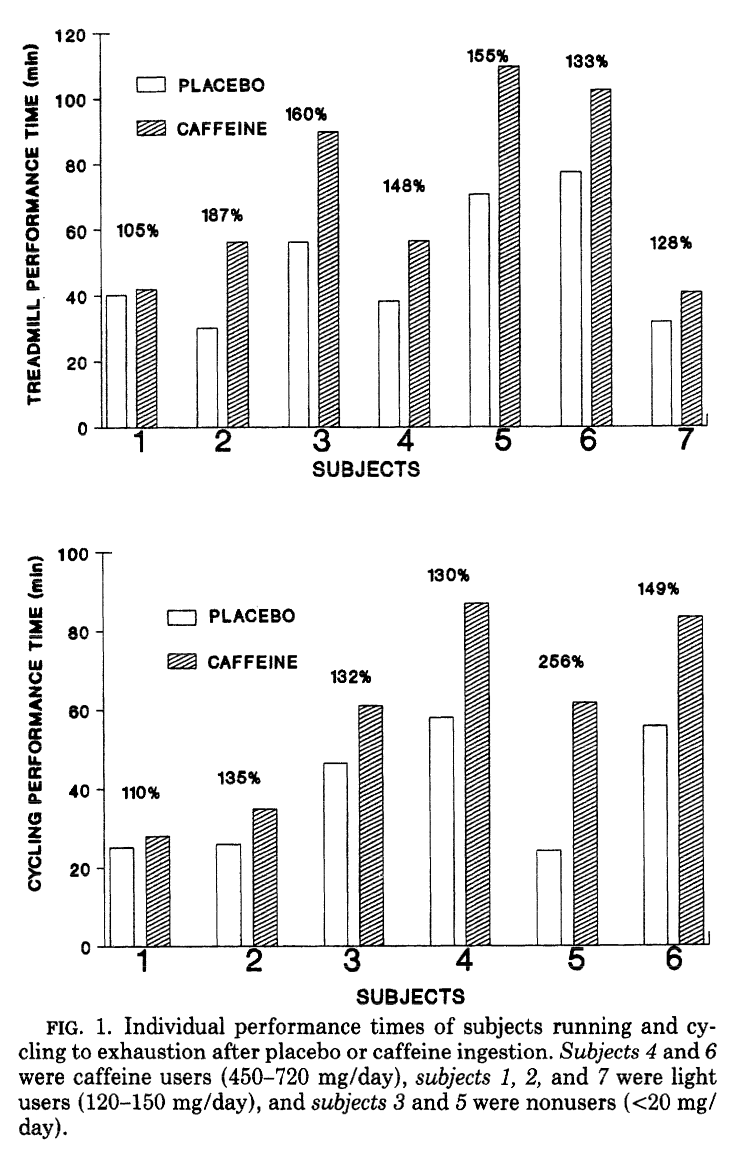
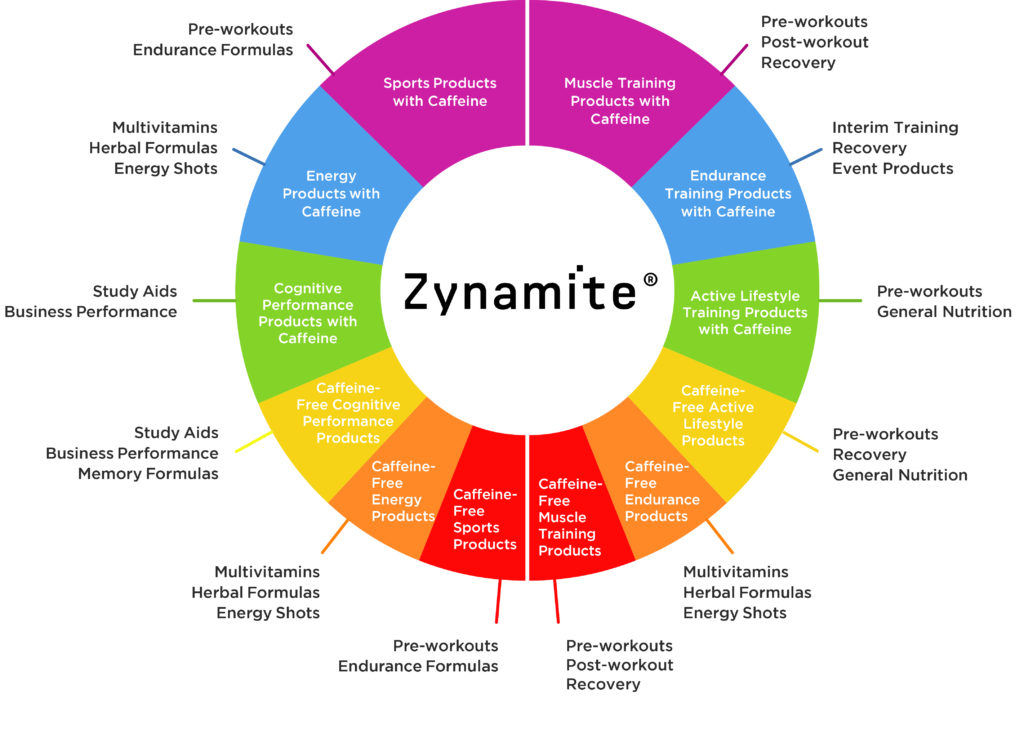
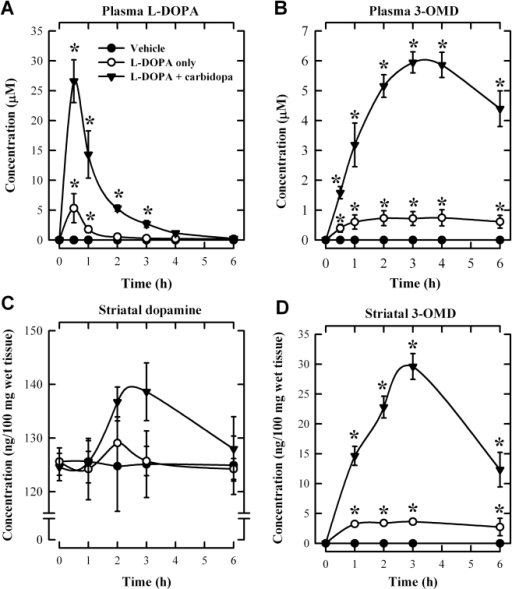
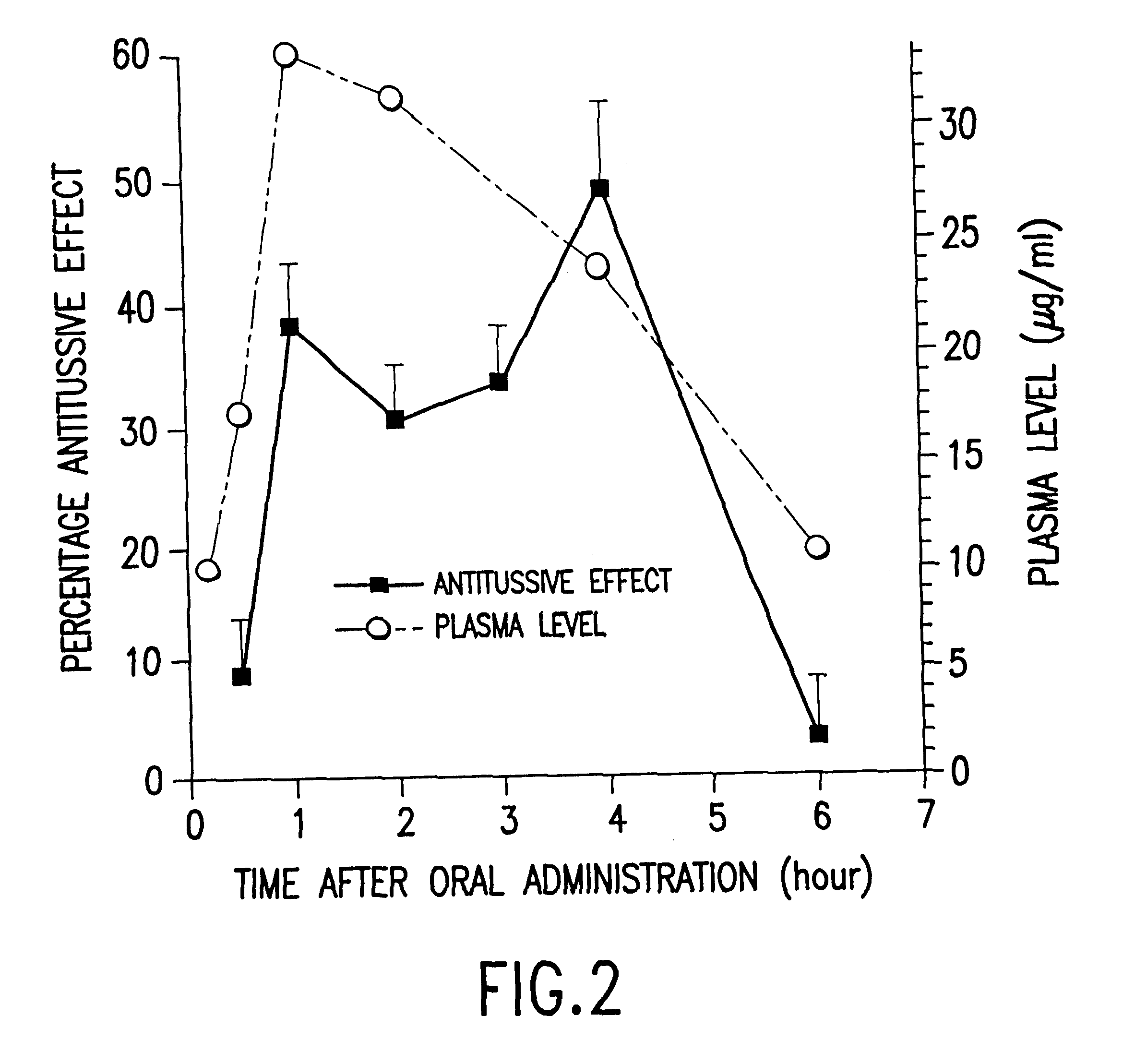
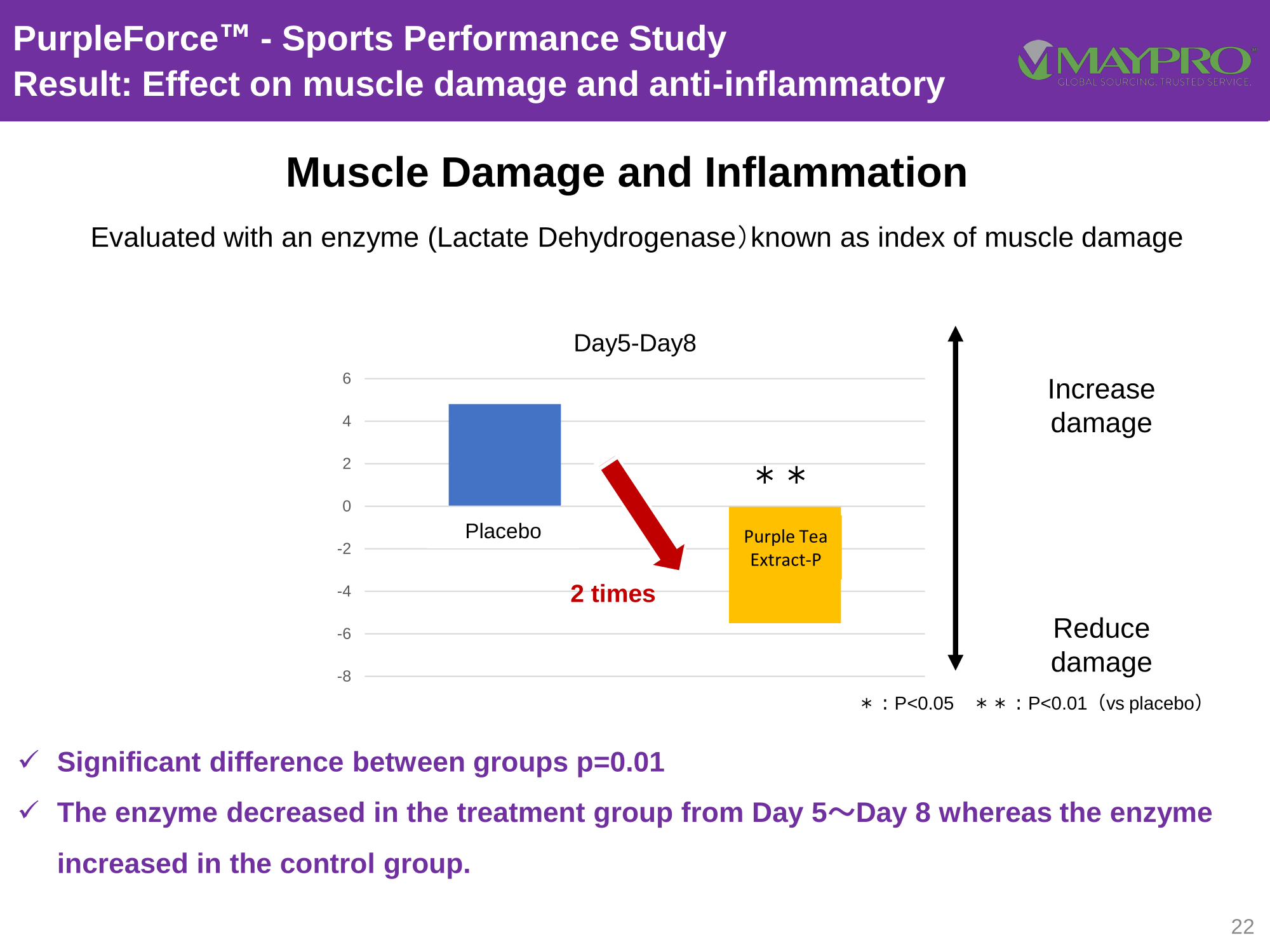


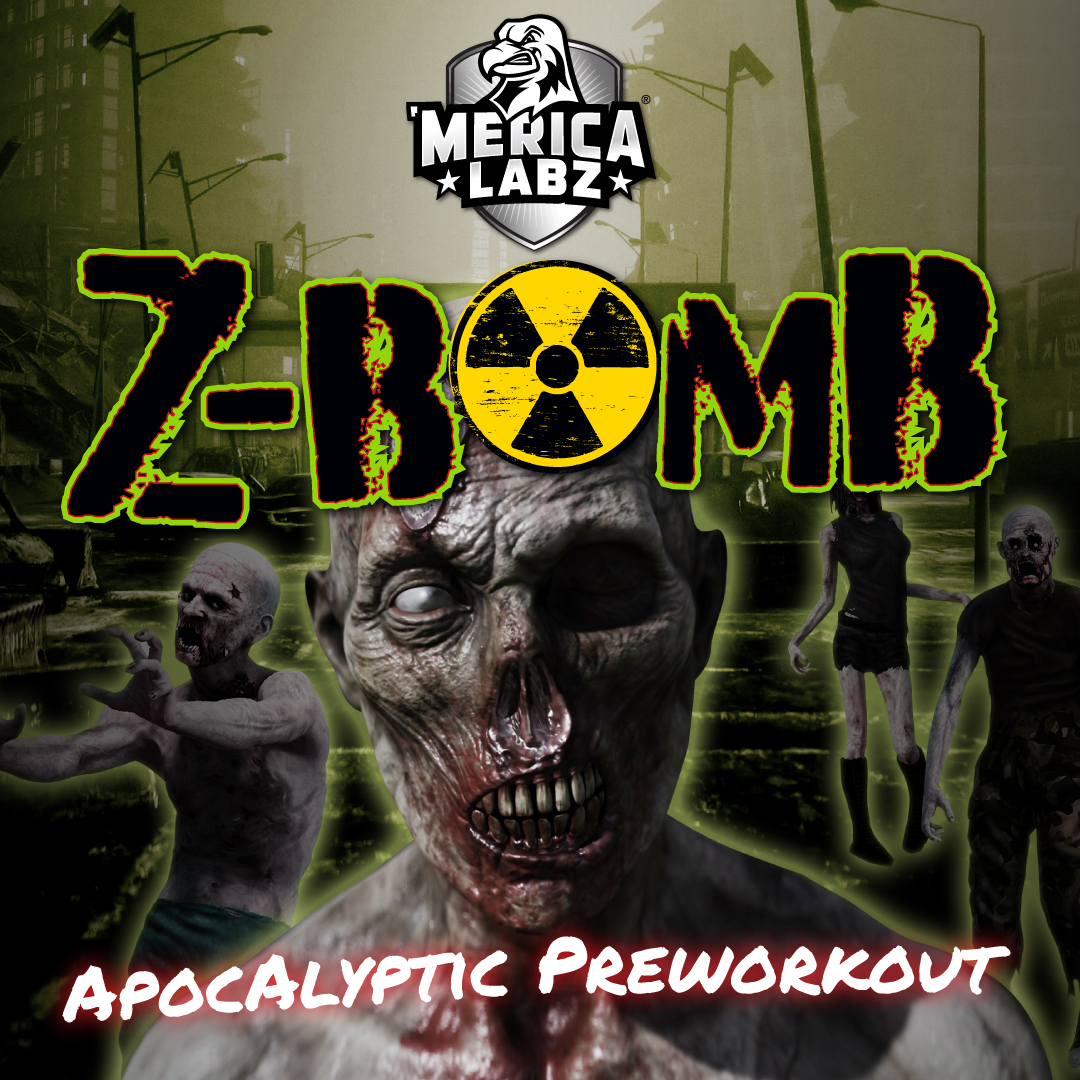


Comments and Discussion (Powered by the PricePlow Forum)